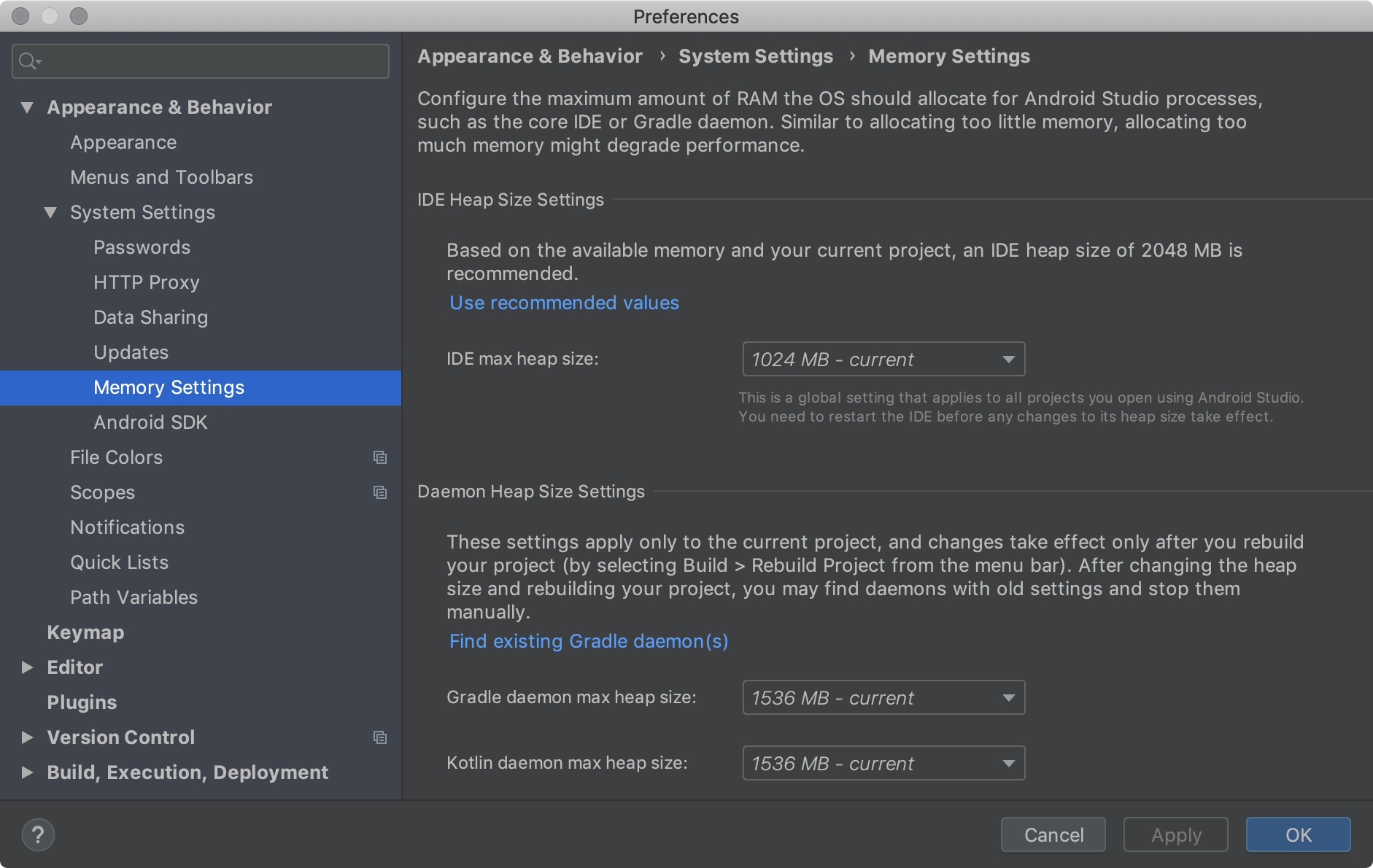

Windows notification about the crashed executableĪt first, I wasn't sure how to fix this problem. (Recall from Part 1 that I'm running a 64-bit Windows operating system.) Jeff Friesenįigure 11. Shortly after the emulator window appeared, the Windows-based qemu-system-armel.exe program that's responsible for creating this window crashed. The blank screen of death (click to enlarge) In my case, the status bar presented a Waiting for target device to come online message and an empty emulator window appeared. Unfortunately, at this point in the installation you may receive a message that Instant Run is not supported.
#ANDROID STUDIO ANDROID#
Troubleshooting the Android device emulator Take a virtual tour of Android versions, from Cupcake 1.0 to Pie, released in August 2018. Highlight your chosen device entry and click OK.

Nexus 5X API 15 is available in the Android Virtual Device list (click to enlarge) You should now be returned to the Select Deployment Target dialog box. You can keep the defaults or make whatever changes are necessary, then click Finish. Keep the default settings and click Finish (click to enlarge)įor this example, I chose to keep the default settings. Here you can verify your settings for the emulator AVD that will run your emulated device. Use the Back button to navigate out of the installation dialogs and back to the Android Virtual Device (AVD) panel. Click Finish when installation is complete (click to enlarge)īefore continuing, it's a good idea to check your work. At this point, the system image components are being downloaded and installed. After accepting the license agreement, you will be presented with the Component Installer panel. You must accept the license agreement to continue. Accept the license agreement and click Next (click to enlarge)

#ANDROID STUDIO INSTALL#
Before you can install the system image, you will also be presented with a license agreement. You'll need to click the Download link to download whatever system image you've chosen. Select a system image for device emulation (click to enlarge) I clicked the Other Images tab followed by IceCreamSandwich - the highlighted line in Figure 5. The resulting System Image panel invites you to select a system image for this device emulation. Click Next after you've made your selection. For this example, I selected the highlighted (default) Nexus 5X. Select whatever device you want to emulate. Use the Virtual Device Configuration dialog box to choose a device to emulate (click to enlarge) Clicking Create New Virtual Device launches the dialog box shown in Figure 4. In this case, Android Studio hasn't detected any connected USB devices or emulators, so you'll need to configure a new virtual device. Select the device or emulator to run the app (click to enlarge) Android Debug Bridge (ADB) must be initialized in order to run an Android app (click to enlarge)Īfter you've initialized the Android Debug Bridge, the message in Figure 2 will be replaced by a list of all connected USB devices and running emulators that have been detected by Android Studio. Either way, Android Studio responds with the Select Deployment Target dialog box. Alternatively, you can click the green triangle button on the toolbar. You can run the example application (W2A) or any other app by selecting Run 'app' in the Run menu. Run your Android app on an emulated device For my example I'll be using an Amazon Kindle Fire HD tablet, but the instructions should generally apply to the device of your choice. In this section I'll show you how to run an Android application two ways: first on an emulated device, and then on an actual device.
#ANDROID STUDIO APK#
For example, you could use the Generate Signed Bundle / APK menu item to build a signed app bundle or APK. Do more with the Build menuĪndroid Studio's Build menu lets you perform several build tasks. If necessary, Gradle will automatically rebuild the app before its APK is installed and the app is run. Another approach is to actually run the app. For example, you could select Rebuild Project from the Build menu. There's more than one way to build an Android app. The event log reveals no problems (click to enlarge)


 0 kommentar(er)
0 kommentar(er)
